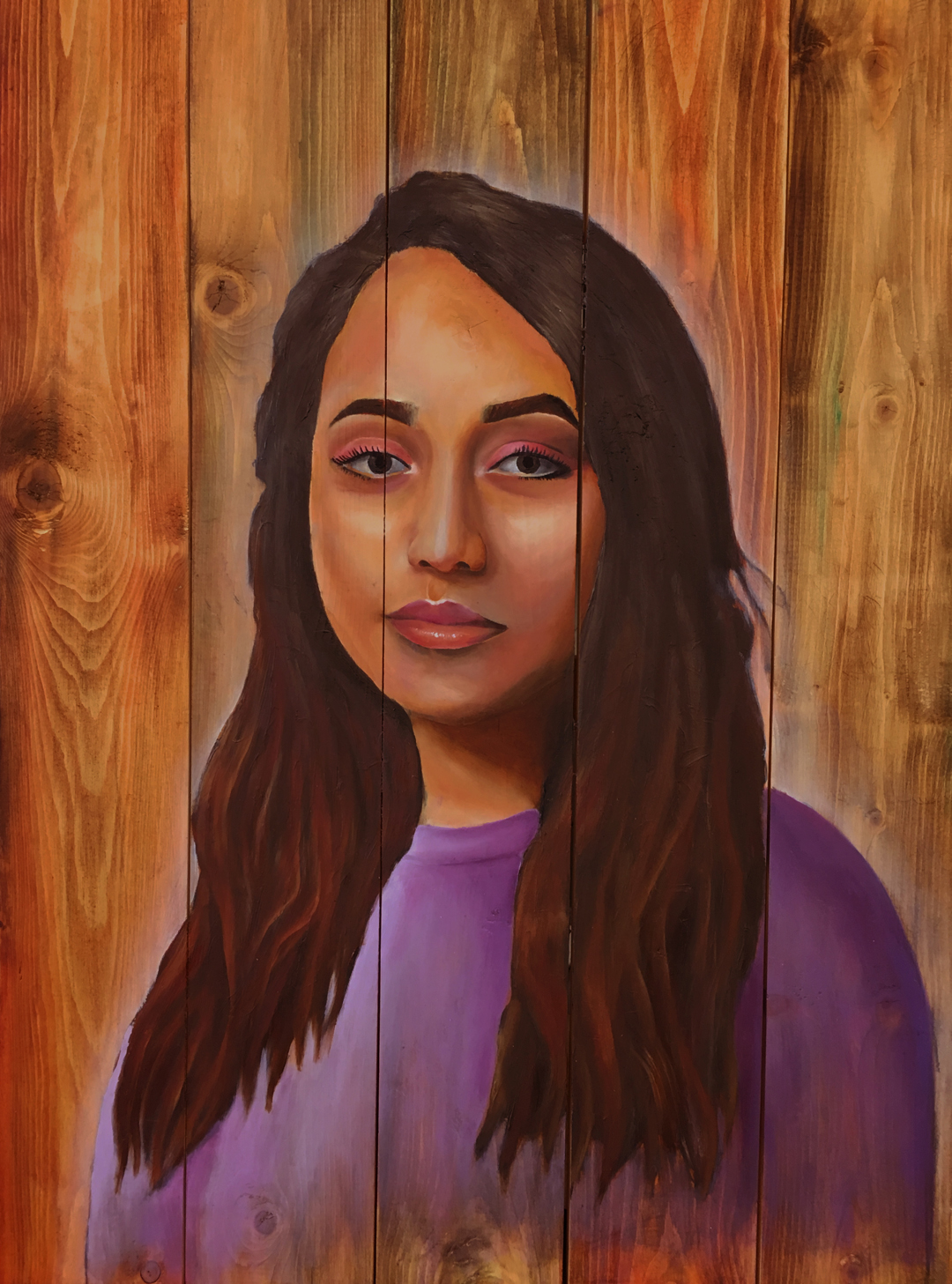
“Rise Above”
Elisabeth Steele
Oil Paint
Anisha Kami was born into a resettlement camp in Nepal and spent the first years of her life exhibiting more bravery than most of us ever will. Everyday in attempt to collect firewood for her family so that they could cook food, she risked being hurt, raped, and even murdered. She is the definition of a strong woman and I wanted this to be conveyed in my painting. When I took my reference photo of her, I had her pose sitting tall and she radiated confidence. The portrait is painted in oils on wooden panels. The wood background is symbolic of the firewood she would risk everything for to go collect for her family but the contrast of the white halo around her shows how she has risen above, survived, and flourished. This painting shows that you never know what has been apart of someone’s background and that the bravest souls may be sitting right next to you without you ever knowing.
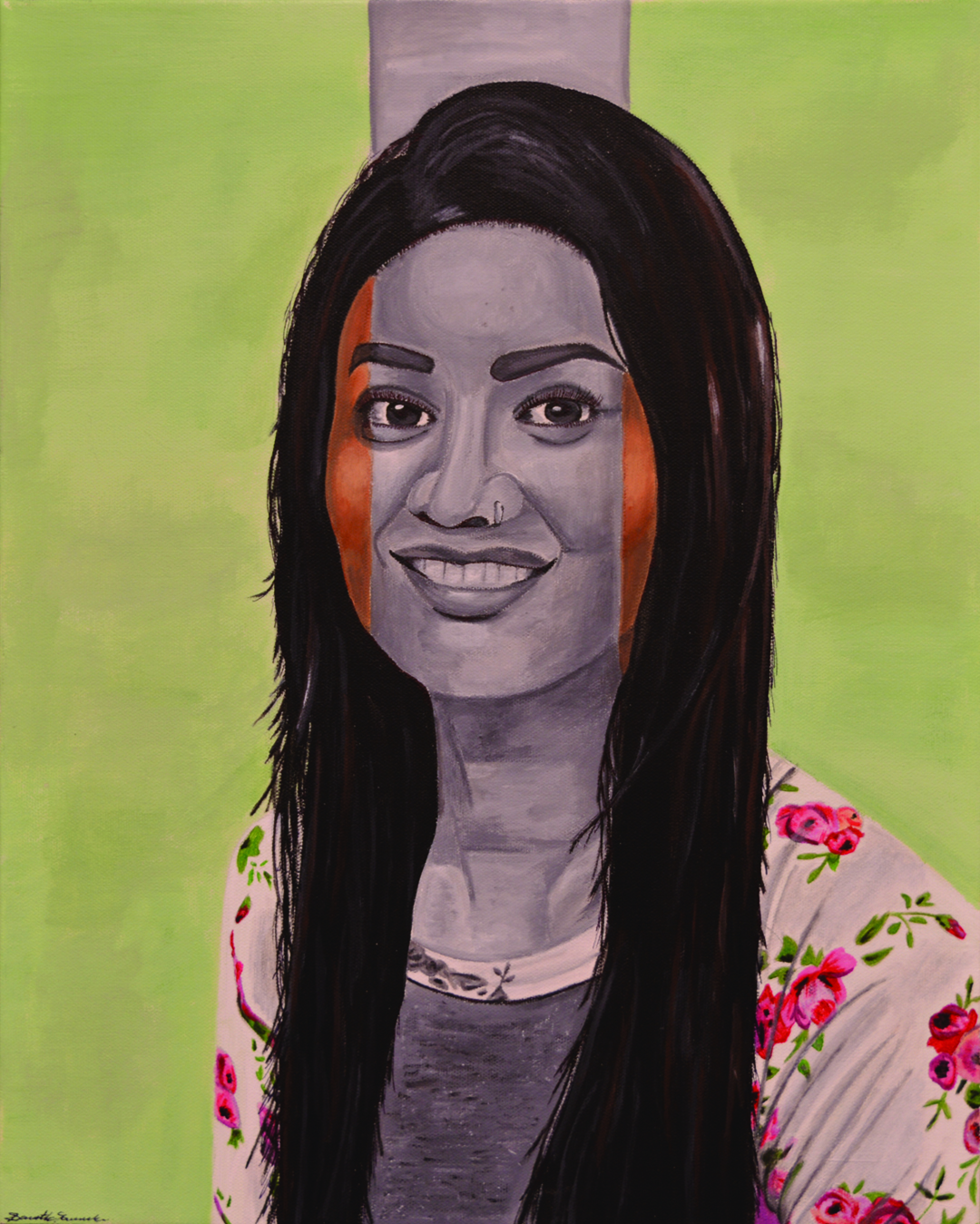
“A Hidden Portrait”
Artist: Samantha Tamulonis
Media Used: Acrylic Paint, Ink
Susmita S: once a refugee student at Westerville Central High School.
After moving to America as a refugee from Nepal in 2014, Susmita lived in Buffalo, New York for two and a half years. There she encountered many difficulties in adjusting to American life. With no ESL, and only one Nepali friend, Susmita went one year without talking to anyone outside of her close-knit circle of family and friend. Many refugees and immigrants undergo what is called a silent period, a phase reported to have been observed in second language acquisition where the learner does not yet produce, but is actively processing the new and unfamiliar language. After coming to Westerville Central High School where ESL was offered, Susmita began to socialize and flourish in her new found environment. Now, Susmita’s family has moved into their own house and have begun a new phase of their lives, one that hopefully brings them a sense of happiness after all that time of struggle.
The painting is a portrait of Susmita. The segments of color represent the sense of normalcy in her life, the first being her life in the Nepali camps, the second being her life here in the United States. The section painted in black and white is meant to represent her transition between the two, her period of unrest and silence. By painting her from a photo reference taken by Ms. Kiko, I hoped to depict Susmita in one of her most natural and simplest of forms so as to draw focus toward the deeper meaning behind the piece.
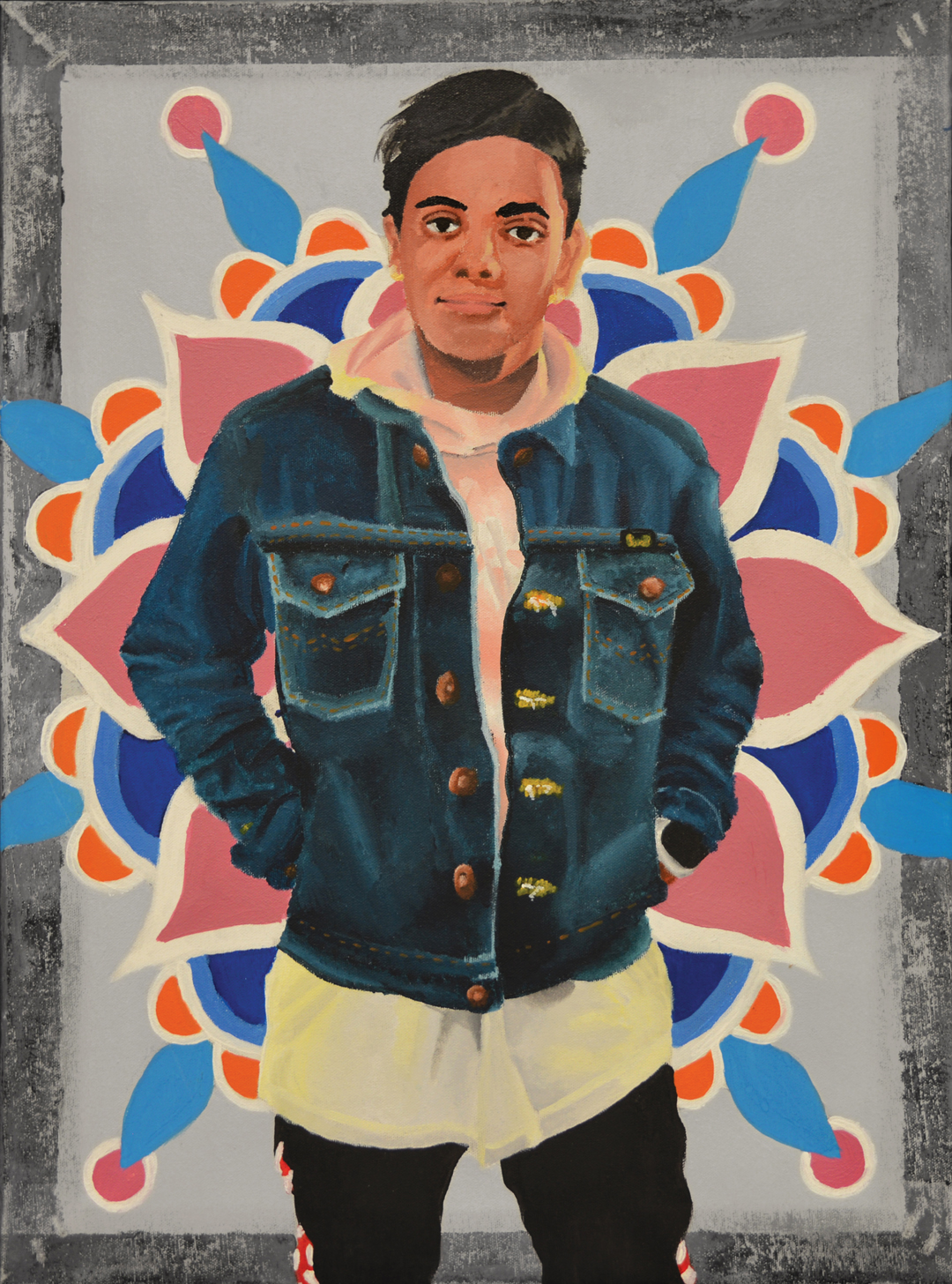
“Real”
Taylor Downard
Acrylic on Canvas
When you look at this painting, what words come to mind? I’d say it’s fair to assume that one of the first words that comes to mind is ‘foreigner’, and in some regards this is true. This is Som. He was raised in a Nepali refugee camp in Bhutan, and his family moved to the United States when he was sixteen years old. Even though in technicality Som is a foreigner he embodies something greater than himself, he is real. Not in the sense that he’s not imaginary, but in the sense that he is genuine. He is kind. He is humble. He is thankful for the opportunities he has. He is appreciative of the small luxuries of life. Meeting Som showed me that the term ‘foreigner’ is just an idea used to separate people from one another. It’s the people themselves that are, in fact real. And that it is this sense of being real that can transcend skin color, nationality and language barriers to bring people together as one.
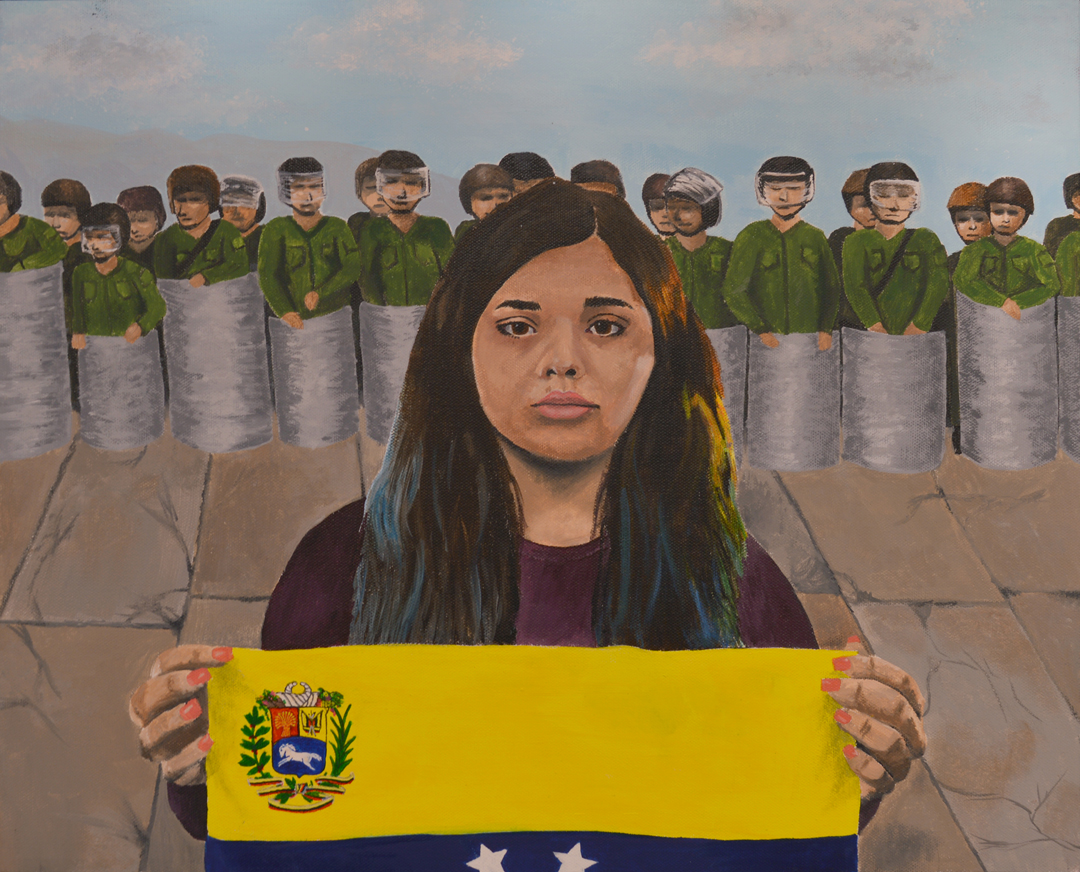
“A Protest to my Country”
Artist: Morgan Meissner
Media Used: acrylic paint
Gabby attends Westerville Central High School. She was born in Venezuela and lived there for 13 years as a child. Complications occurred, between her family and the government, and her family felt the need to leave the country to feel safe again. Violent riots were occuring within her country as a protest to the government. Gabby specifically could not participate in the protests, with fear of the government would come after her family. I wanted to portray her holding the Venezuelan flag peacefully, protesting in the front of a line of police officers. All the officers are holding a shield barrier. This barrier represents the symbolic struggle Gabby went through to cross the borders into America and leave her home.
I used a photo reference from online, and captured a few photos of Gabby at school to create my piece.
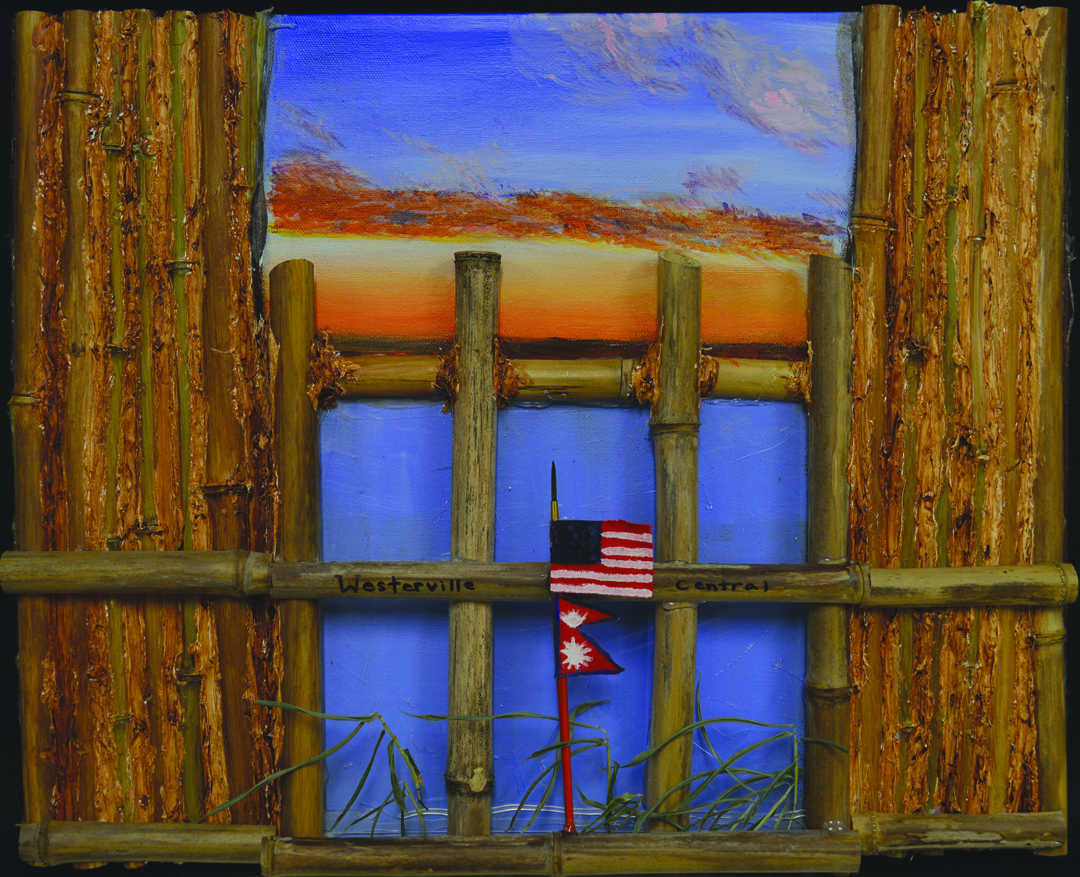
“Building the Future”
Aubrey Yarnell
Multi-media on canvas
| Bamboo stalks | Hot glue | Plastic |
| Bamboo leaves | Acrylic paint | Fabric Paint Brush |
| Super heavy gesso | ||
The inspiration for this piece of art was an interview I listened to for art class. The podcast was an interview of Som, a student at Westerville Central High School; who came to Ohio from Nepal. In the interview, he spoke of the Nepali refugee camp he once lived in and how even the school was built of bamboo, among other materials. He also spoke of the transition from that environment to WCHS. This part of the podcast inspired me and gave me the idea for my piece, a combination of the Nepali camps and WCHS. I used materials to simulate the looks of the camps, but in the shape of WCHS. The idea behind the artwork is the new and old coming together to create something new and beautiful that holds a memory of [Som’s] past and a hope for the future.